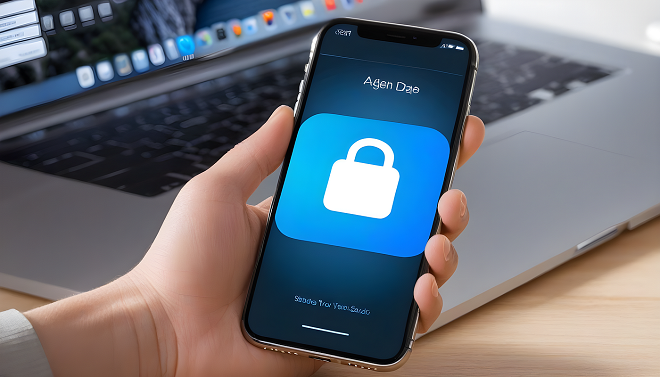Fortifying Source Code: A Comprehensive Guide to App Security Measures

Your software’s source codes serve as its building pieces. Organizations’ intellectual property (IP) that is protected by copyright rules sometimes consists of source codes. Intellectual property (IP) in the form of recently created algorithms, fraud detection, payment processing, or other essential components may be linked to source codes. Organizations may suffer financial and reputational harm if source code security is breached. When hackers get their hands on source code, they may take advantage of flaws, while rival companies can profit from intellectual property and business secrets.
The app code protection is thus particularly crucial, and companies need to have strong security measures in place to guarantee app code protection. When source code is made publicly available, rivals might get vital information about the program as well as private aspects about it. In this post, we’ll examine source code security in depth and its significance.
Protection of App Codes
Security of source code may be jeopardized by external and internal attacks. The development team’s careless behavior and errors often lead to insider threats. Malevolent hackers are the source of external dangers. Even though source code is essential to the development of apps, security concerns sometimes overlook it. To produce proprietary software, developers use open source code and apply their own improvements.
Source code leaks have the potential to reveal private client information, which might cause them to lose faith in your company. Contributors to the repository will be able to copy and disseminate sensitive information if the necessary security measures are not in place. Accidental or deliberate source code leaks will cost the company money and get it into legal hot water.
How Can App Source Code Be Secured?
To safeguard source code, developers might use a variety of security techniques. Let’s examine in detail the most crucial steps you can take to strengthen the security of your source code.
Deal with secure source code at all times.
Developers should utilize tools like Static Application Security Testing (SAST) and Dynamic Application Security Testing (DAST) to make sure their code is safe. SAST tools are helpful for monitoring the code and ensuring that it complies with all regulations. Throughout the software development lifecycle, security coverage is increased via early identification of source code vulnerabilities. DAST approaches may be used to non-code regions and third-party interfaces. DAST tools improve the robustness of SAST approaches by addressing several security flaws.
Enact a policy to protect the source code.
Companies need to have a strategy in place to manage and safeguard their source code. Applying security best practices would be made easier with a well defined plan for source code protection that included laws, regulations, and standards. It may be less likely that code will be compromised during development and after release if the recommended code protection technique is adhered to strictly.
Create an encryption and monitoring system.
Data security is guaranteed while it’s in transit and at rest via the use of encryption techniques. Monitoring and encryption together might improve source code security. Data, keys, and code strings may all be encrypted to potentially hinder hackers’ ability to crack the code. It is advised to always be on the lookout for any strange conduct in order to avert assaults. Early reporting and ongoing monitoring help to minimize damage and save restoration costs.
Source code may be strengthened by using code obfuscation.
In order to enhance code security, programmers may combine many obfuscation strategies. Among the obfuscation strategies that may be used to stop hackers from abusing the code include translating brief bits of code using different code formats, making the code difficult to understand, and inserting dead or fake code to cause confusion.
Use in-app security techniques
One method for app security that allows for deeper-rooted visibility at the code level is RASP, which stands for runtime application self-protection. RASP offers improved SSDLC integration and attack visibility focused on DevSecOps. It offers more precise information about the susceptible code. Using this knowledge, developers may change the coding and get rid of security flaws. RASP safeguards code at runtime regardless of the deployment environment and is not dependent on the cloud.
Employ shielding techniques
The code of an application may be changed using shielding techniques to make it more difficult to tamper with. It assists in preventing piracy and guarantees binary app protection. In order to hinder hackers from analyzing the binary of the program, shielding additionally incorporates biometric authentication checks. Shielding is one way that businesses may comply with legal and regulatory obligations.
How Does Your Source Code Get Protected by Appsealing?
AppSealing protects source code by using security tools and methods including runtime protection, obfuscation, encryption, and app shielding. The app may be protected against OWASP vulnerabilities and zero-day threats by using Appsealing’s RASP capabilities. It enables improved insight into various problems that are present in the application code. In order to safeguard the program from malevolent insiders and external attacks, appending guarantees precise source code identification and employs a combination of security mechanisms. Appsealing protects programs in runtime using real-time threat monitoring and source code security.
It uses a strong, multi-layered security technique to keep vulnerabilities out of the source code. With Appsealing, you can prevent code thievery and decompiling of source code files like DEX, SO, and DLL. Additionally, it offers snapshots of every hacking attempt, facilitating data-driven decision-making and quicker risk reduction.
Conclusion
Source code security is something that proprietary software developers especially need to consider. In addition to the ones covered here, you may also adopt additional effective security measures including access control, endpoint security, and the use of network security technologies. Attackers find code repositories to be attractive targets, therefore source code security is essential to preventing businesses from unintentionally disclosing important information.
Reviews of the source code are essential for identifying potential weak points. Source code reviews may identify and stop passive risks like poor cryptography, business/application logic errors, and insecure dependencies, as well as active threats like PII and disclosed secrets. Reviews of the source code assist in deciding where to spend time and energy to reduce risk.
The responsibility for protecting source code lies equally with the operations team, security team, and developers. One of the company’s most precious assets is the source code, which contains vital details about the program. Regulatory penalties may also result from a failure to safeguard source code.





